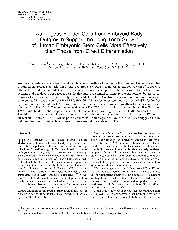摘要
Autologous feeder cells have been developed by various methods to minimize the presence of xenogenic entities in human embryonic stem cell (hESC) cultures. However, there was no systematic comparison of supportive effects of the feeder cells on hESC growth, nor comparison to the supportive effects of various feeder-free culture systems and standard mouse feeder cells. In this study, we aimed to compare the supportive abilities of autologous feeders derived either directly from H9 hESCs (H9 dF) or from outgrowth of embryoid body predifferentiated in suspension from H9 hESCs (H9 ebF). Mouse feeder system and matrigel-mTeSR1 feeder-free system were used as controls. H9 ebF was found to secrete more basic fibroblast growth factor in the conditioned medium than H9 dF did. The undifferentiated state of H9 hESCs was sustained more stably on H9 ebF than on H9 dF, and the differentiation potential of H9 hESCs on H9 ebF was higher than on H9 dF. We concluded that H9 ebF was an optimal autologous feeder to maintain the long-term undifferentiated state of hESCs in our current culture system. This study helps to standardize the autologous culture of hESCs. It also suggests a more definite direction for future development of xeno-free culture system for hESCs.
- 出版日期2010-8
